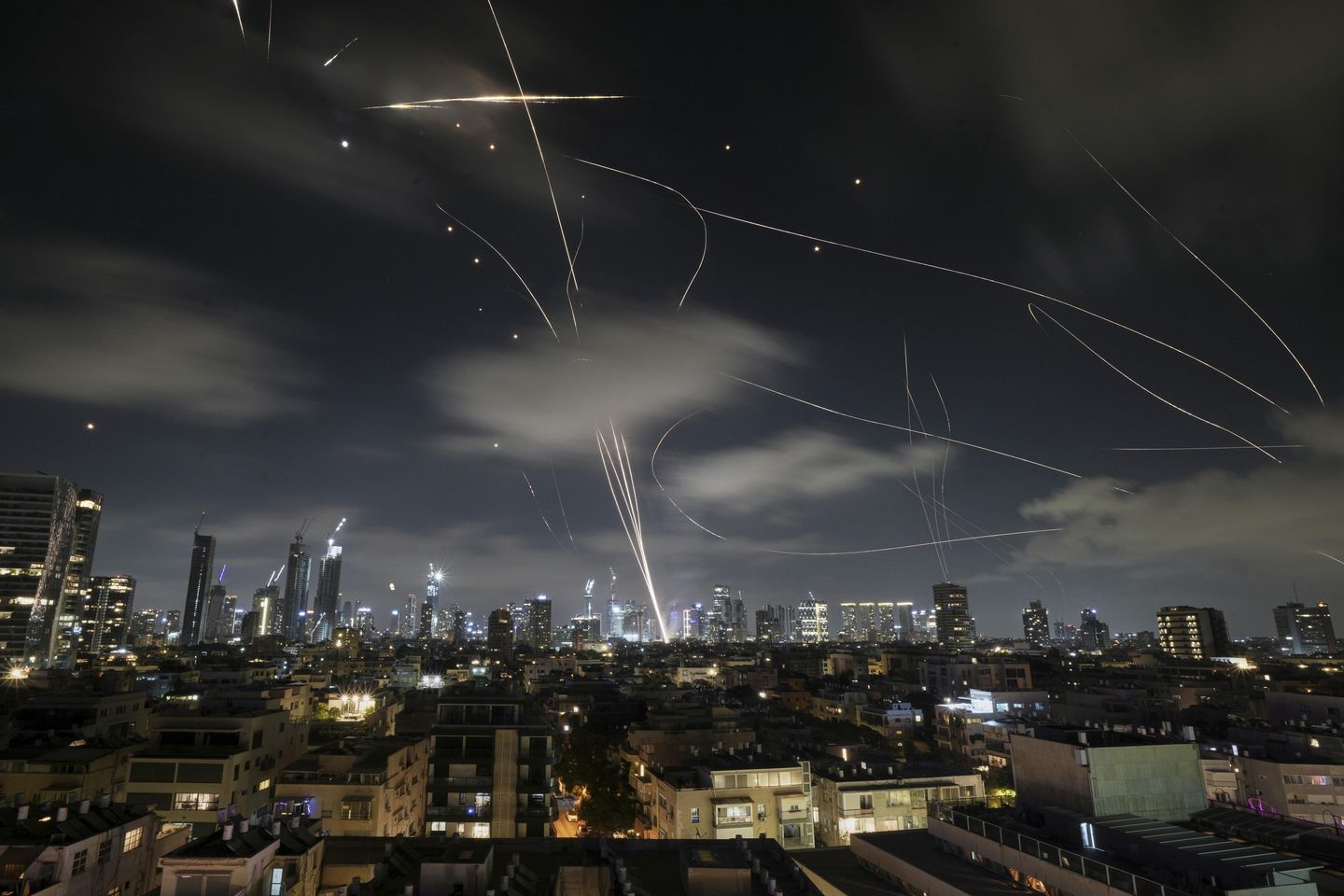
ISTANBUL — A handful of Iranian missiles fired in daily barrages since the war began last week have managed to pierce Israel’s multi-layered air defense, hitting targets and causing deaths in Tel Aviv and Haifa. But defense analysts say Israel’s shield system appears to be holding its own so far.
The biggest exception came Friday, when a missile reportedly struck the Israeli Defense Force’s Kirya military headquarters complex in Tel Aviv, causing significant damage. Israeli media including Yedioth Ahronoth cited government sources confirming the strike, though official military spokespeople have yet to comment publicly. Other attacks have killed at least 24 people and injured more than 1,100, regularly sending residents into shelters across central Israel.
But as the fighting approaches the end of its first week, Israeli and U.S. interceptors have successfully blocked the majority of Iranian ballistic missiles, even as saturation attacks continue to test the limits of the system. On Wednesday, Israeli forces reported destroying eight more Iranian missile launchers in western Iran, including underground TELs — mobile launchers — near Kermanshah. Video footage released by the IDF showed secondary explosions consistent with detonated warheads.
Iran launched about 15 missiles overnight Tuesday, most of them Shahab-series ballistic missiles. One Shahab-3 missile landed near Dimona, causing no injuries. Iran claimed use of hypersonics, but Israeli and U.S. officials have not confirmed this.
Israel has not struck the Fordo nuclear facility — an omission that underscores its strategic and symbolic significance. Buried deep beneath a mountain near Qom, it is Iran’s most heavily fortified enrichment site. Experts say it could only be seriously damaged by U.S.-made bunker-busting munitions, which Israel reportedly could only obtain from the U.S. The site continues to operate under International Atomic Energy Agency monitoring, and the agency has not reported any damage.
“Iran’s strategy seems aimed at dragging Israel’s missile defense into a war of attrition, while attempting to sustain psychological pressure on the civilian population,” said Wolfgang Pusztai, a former Austrian military attache and senior analyst at the Austrian Institute for European and Security Policy. “They launch 40- to 60-missile barrages, mostly conventional, with a few Fattah-1 hypersonics sprinkled in, trying to overwhelm Israel’s layered defenses.”
SEE ALSO: Trump says next few days will be ‘very big’ for potential U.S. involvement in Iran
Mr. Pusztai noted that surviving Iranian TELs are stored underground and exposed to Israeli strikes only briefly before or after launches. Israel tries to patrol suspected launch zones with drones and jets, but terrain and distance make constant overwatch difficult.
The munitions Israel uses to shoot down incoming missiles, including Arrow 3 interceptors, are under strain. Israeli defense officials warned of “unsustainable usage rates” over the last 48 hours. Emergency shipments from the U.S. are reportedly en route.
But the Iranian aerial assault has its own problems. The Institute for the Study of War estimates more than 120 missile launchers and 70 Iranian battery sites have been destroyed since hostilities began. Still, as many as 300 launchers remain.
“The more TELs Israel can destroy, the fewer missiles Iran can launch per wave — and the longer Israel’s interceptors will last,” Mr. Pusztai said. “From what we can tell, they’re holding up. But they need at least three to five weeks of supply to sustain this.”
Terminal High Altitude Area Defense batteries have been actived in northern Israel and integrated into the air defense system that enables real-time coordination across Israeli and with U.S. missile defense platforms. U.S. Navy Aegis-equipped destroyers have also shot down incoming Iranian missiles using interceptors.
Cruise missile activity is on the rise. Two Soumar-type launches were detected over Iraq this week, though both failed to reach Israeli airspace. Israeli officials believe Iran is testing for blind spots in low-altitude radar coverage.
SEE ALSO: Iran’s leader rejects call to surrender, saying U.S. intervention would cause ‘irreparable damage’
While oil prices briefly spiked Tuesday, Brent crude stabilized above $75. No disruptions have been reported in the Strait of Hormuz. “Closing the Strait remains a last resort,” Mr. Pusztai said, “because it would damage Iran’s own exports and antagonize China, which relies on the Gulf for 40% of its crude.”
Mr. Pusztai said Israel may be weighing plans to escalate the attack on Iran. “Israel might begin hitting more IRGC [Islamic Revolutionary Guard Corps] infrastructure tied to internal security and the economy — like power stations or oil refineries. That’s the regime’s center of gravity.”
Iran through Wednesday had avoided targeting U.S. bases in Gulf states, wary of broadening the war. “They’re already under enormous pressure. Firing on U.S. forces would bring in new enemies,” Mr. Pusztai said.
At the IAEA in Vienna, Director General Rafael Grossi warned that the military escalation is “delaying the essential work on a diplomatic solution to ensure that Iran does not acquire nuclear weapons.” The agency has not yet reported any radiological threats but is watching closely.
Russia’s foreign ministry issued a statement accusing Israel of violating international law. Moscow warned of “irreversible consequences for regional stability” and said it may call an emergency U.N. Security Council session.
Domestically, Israeli leaders insist the tide is turning. Prime Minister Benjamin Netanyahu declared the campaign a “success in progress,” while opposition leader Yair Lapid met with him this week in a rare display of unity. Still, the Hostages and Missing Families Forum has called for a renewed ceasefire push via Qatar, warning that the war risks sidelining efforts to bring back Israeli captives from Gaza.
Mehran Kamrava of Georgetown University in Qatar said Iran is deliberately pacing its response. “They’re preserving advanced assets and trying to contain the war,” he said. “If reports of outreach to Oman and Qatar are accurate, that fits their objective to end this quickly.”
Mr. Kamrava added that Iran’s domestic debates have shifted. “Those advocating for a peaceful nuclear program have now been marginalized. If the regime survives this war, it will seek closer ties with China and Russia to rebuild air defenses and missile capabilities.”
So far, Israel’s missile shield is holding. “The real test may come not in the first two weeks — but in the ones that follow,” Mr. Pusztai said. “If Israel’s interceptors hold and Iran’s launchers dwindle, the strategic balance will shift decisively. If not, this could spiral into the very war of attrition Tehran wants.”












